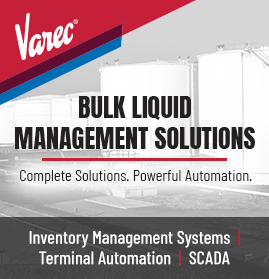FLNG is being widely considered as a solution to cost pressures in the industry. FLNG eliminates the need for a pipeline to shore for offshore fields and it also reduces some of the regulatory hurdles associated with plants constructed on land. Modularised construction allows fabrication under higher levels of productivity and quality control than prevail at remote locations, saving substantial cost and after exhausting one remote field, an FLNG facility can be moved to another stranded gas opportunity producing further revenues. Bill Howe, CEO of Gasconsult Limited explains.
FLNG schemes will by nature be lower capacity than current baseload plants as they are deck space constrained. Special design considerations apply – there is a need for compact layouts, lower weight and a smaller footprint to minimise the size and cost of the host hull.
Innovative liquefaction cycles also have a role to play. An alternative to the use of nitrogen or mixed hydrocarbon refrigerants is to use the feed natural gas as the refrigerant medium. The use of natural gas refrigerant is an excellent fit with FLNG and Gasconsult has developed its ZR-LNG process with a clear focus on this market.
ZR-LNG is a simple, patented, high efficiency, mid-scale liquefaction process. It offers an alternative solution to the very high capital costs and business risks associated with recent mega-scale projects. Award of a Government grant from the Innovate UK Fund has allowed Gasconsult to fast track commercialisation of ZR-LNG and generate high-quality project assessment data.
Following the grant award late in 2017, Gasconsult commissioned CB&I, a leading LNG EPC contractor for design development work to confirm the integrity and practicality of the process and mechanical design of ZR-LNG, production of key design data and provide a credible capital cost. The scheme selected for the development work was an indirect sea water cooled floating application using multiple gas turbine driven liquefaction units with a nominal single train capacity of 1.5 Mtpa; on a purpose-built hull.
CB&I verified and enhanced Gasconsult’s existing process concepts to develop a liquefaction module design.
Outcomes of the work were a standardised design concept for a single liquefaction module per train over three decks with a module frame size of 40 m x 18 m x 22 m (L x W x H). A half deck is included on the top of the module for the gas turbine driver. The overall weight of the module is estimated at 4,400 tonnes, which is within the limits of lift capacities of floating cranes available at FLNG integration yards. The unit would use either the BHGE LM6000PF+ or Siemens SGT – A65 gas turbine to drive the refrigerant compressors. The module concept was developed such that the gas turbine driver area could be designed as a separate ‘driver sub-module’. This provides the option to build this sub-module separately (possibly by the GT supplier) to provide flexibility and/or schedule security to the project execution plan. Power demand at 310kWh/tonne of LNG under basis of design conditions was assessed as equivalent or better than SMR schemes. The dynamic analysis indicated the process was resilient to upset conditions and robust in start-up and shutdown. The RAM analysis indicated an availability of 96%. Vendor feedback indicated that all equipment in the ZR-LNG configuration was operating under conditions of referenced proveness.
In conclusion, key identified advantages were that ZR-LNG requires no refrigerant extraction, import system or storage facilities and no ongoing refrigerant makeup, providing a low cost, low equipment count solution. Heavy hydrocarbon components and aromatics can be removed within the expander-based ZR-LNG liquefaction unit, without the need for a scrub column or stand-alone upstream NGL recovery plant, thus further reducing investment cost and footprint of the liquefaction train. The reduced equipment count, together with the absence of liquid hydrocarbon refrigerants makes the process particularly well suited to FLNG where weight and space constraints and emphasis on safety are key design drivers.
Topics around this, including LNG as a marine fuel and LNG liquefaction and shipping, will all be discussed at the technical streams at the Gastech 2018 conference, held from September 17 – 20 at the Fira Gran Via, Barcelona. Over 350 speakers are expected to address 3,500 strategic and technical delegates during the multi-streamed conference.
For more information, visit: www.gastechevent.com/register-plan/delegate-registration
3rd August 2018









